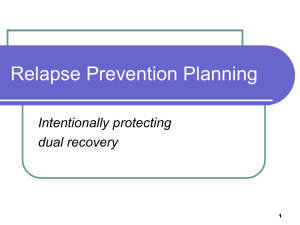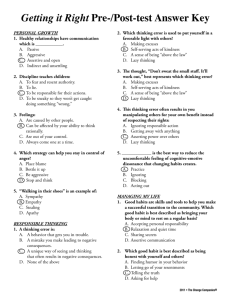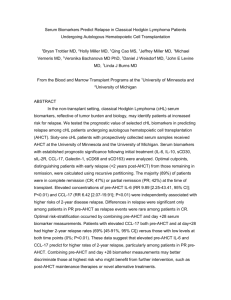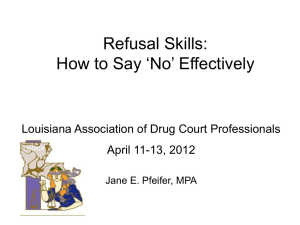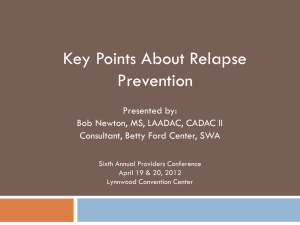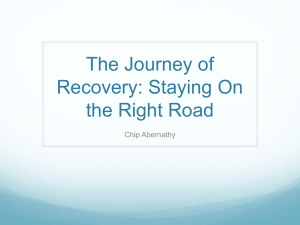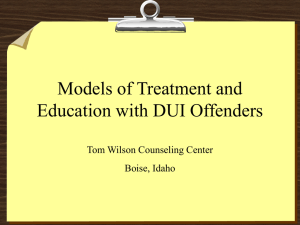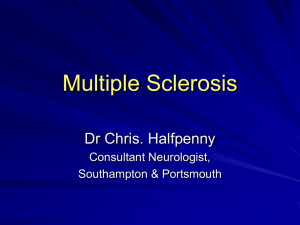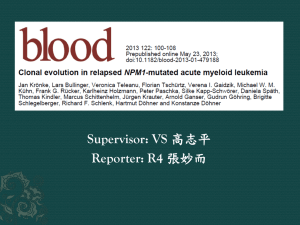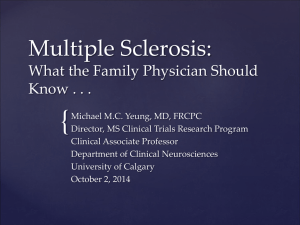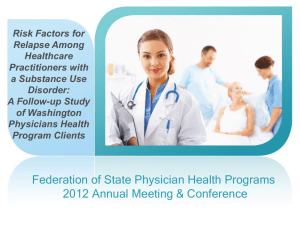link to Integrated Relapse Prevention
advertisement
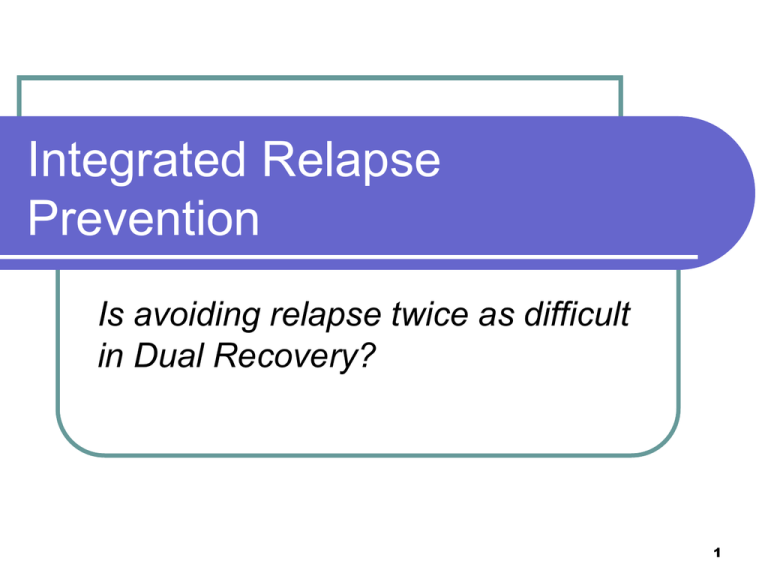
Integrated Relapse Prevention Is avoiding relapse twice as difficult in Dual Recovery? 1 Understanding Relapse as . . . . . . the PROCESS of returning to substance use and/or active symptoms after a period of abstinence / stability 2 Understanding Relapse as . . . . . . ALWAYS a risk when dealing with two, cooccurring “chronic, relapsing conditions” 3 Relapse “Clues” Behavior changes Decreasing what helps; Increasing risktaking, or what doesn’t help 4 Relapse “Clues” Attitude changes Negativity “Not caring” Disowning personal responsibility 5 Relapse “Clues” Mood changes Moodiness Anger Boredom Mania Depression 6 Relapse “Clues” Changes in thinking Rationalization Justification Denial “Stinkin’ thinkin’” Deprivation / entitlement Irrational thoughts Delusional thoughts 7 Identifying High-Risk Situations Individualized (different for everyone) Negative feelings, attitudes, thoughts, behaviors Social pressures Treatment-related problems Relationship problems Urges / Cravings / Temptations / “Teasing the addict” Others (boredom, weekends, $$, physical pain, holidays, etc.) 8 Managing High-Risk Situations Individualized (different for everyone) Analyze the risk factors Identify “precursors,” the steps leading up to the high-risk situation Strategize for recovery success 9 Managing High-Risk Situations Individualized (different for everyone) Write down a plan Share the plan with others Identify gaps in skills /opportunities Problem-solve and fill gaps 10 Building a LONG-TERM Dual Recovery Plan Can be looked at as “aftercare” following a treatment episode, or as “maintenance” of existing gains 11 Building a LONG-TERM Dual Recovery Plan May include many things: Counseling Medication / seeing a psychiatrist AA / NA / DRA meetings, other groups Working with a sponsor / mentor Daily reading of recovery literature Halfway / ¾-house, long-term housing Antabuse Educational / vocational efforts ? 12 Emergency Recovery Card Designed to be carried in wallet or purse Contains a list of names and phone numbers of people supportive of your dual recovery May include professional treatment providers, natural supports, AA / NA / DRA contacts 13 Relapse Response Planning “Progress, not perfection” (although, “Progress not permission” as well!) Dialectical approach, need to not let guilt / shame be an obstacle to getting back on track 14 Relapse Response Planning Some important pieces . . . STOP IMMEDIATELY Reach out to “safe” people Get crisis care if necessary (Detox, PES, CRS, Hospital ER) Get back to doing what works Conduct a Relapse Autopsy, and adjust recovery plan 15 Daily Relapse Prevention Inventory At the end of each day, take the time to review these questions: Were there any clues today that indicate movement toward relapse of substance use or re-activated symptoms? Were there any high-risk situations today that could trigger a relapse of substance use or symptoms? 16 Daily Relapse Prevention Inventory If “yes” is the answer to either of these questions, make a plan to do the necessary adjusting to support dual recovery moving forward . . . 17 Back to our initial question . . . Q. Is avoiding relapse twice as difficult in Dual Recovery? A. _______________________________ _______________________________ 18 THE END Until next time . . . 19
